When does hiking become mountaineering? The difference isn't just about the terrain, but about the conditions you're tackling it under
Our mountaineering guru considers when a hike ends and a mountaineering mission begins

I remember the first time I did a winter skills course. It was on a mountain called Helvellyn in the English Lake District on a bitterly cold February morning. I’d hiked on Helvellyn several times before, though this was the first time I’d approached the mountain carrying a helmet, crampons and an ice axe. After the long walk in and a little bit of practise of kicking steps into the snow with our winter hiking boots, we donned our crampons.
“What d'you reckon then?” asked our instructor, as we strode purposefully towards the meat of the mountain and into the jaws of a blizzard. “Have we gone from hiking to mountaineering?”
The insinuation was that we had. Perhaps it was because we were now all crunching along in our crampons, ascending into increasingly difficult winter weather. It all felt rather wild. However, I couldn’t help but feel that we were still hiking – difficult winter hiking yes, but hiking all the same. It wasn’t quite yet mountaineering. For that, surely we’d need to be using our axes in anger, climbing rather than walking?
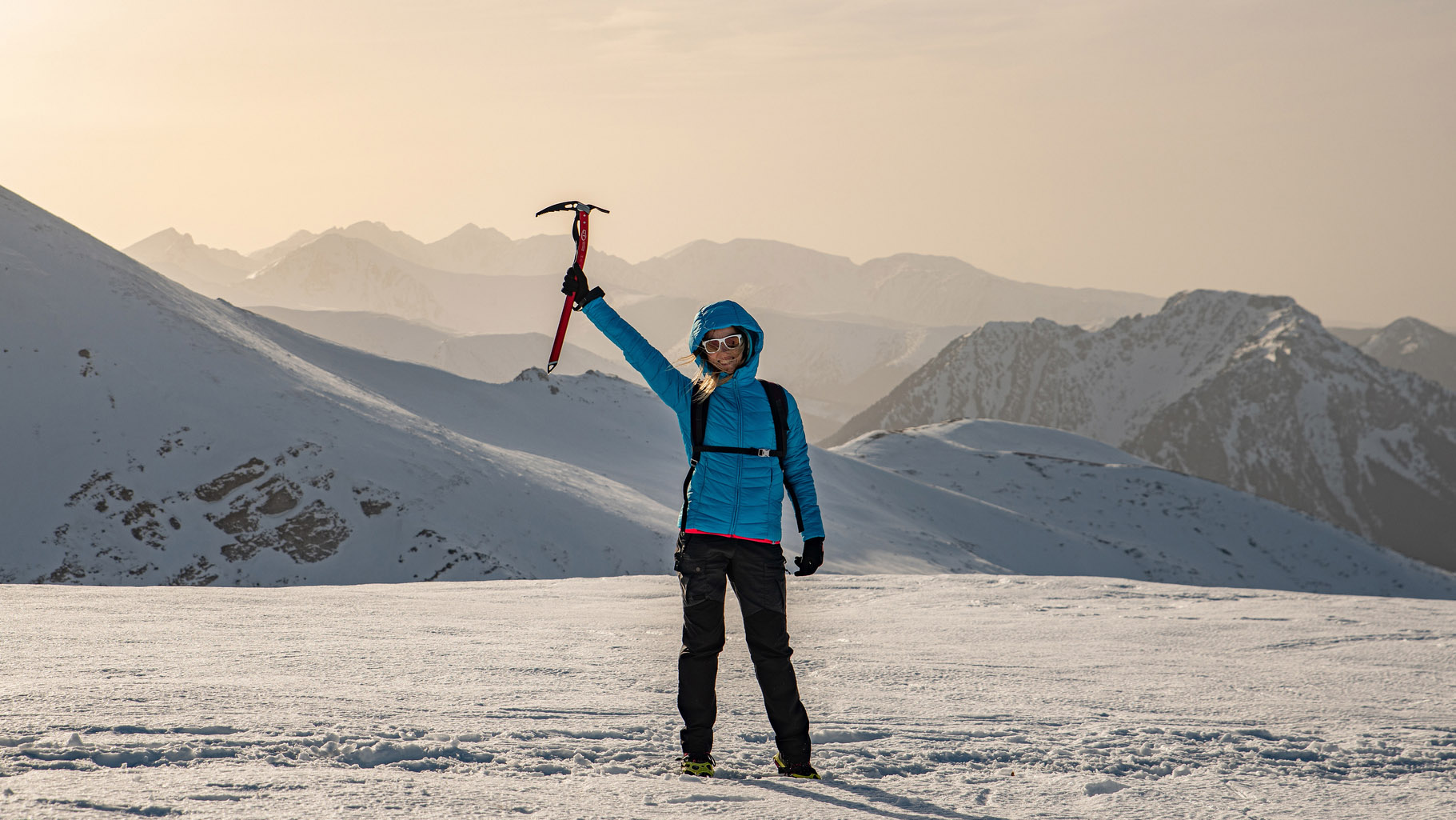
When exploring the high places, particularly where steep or snowy terrain is concerned, you might wonder: when does hiking become mountaineering? At what point do you transition between the two, if there's even a point at all? When can you proudly call yourself a mountaineer?
What defines mountaineering?
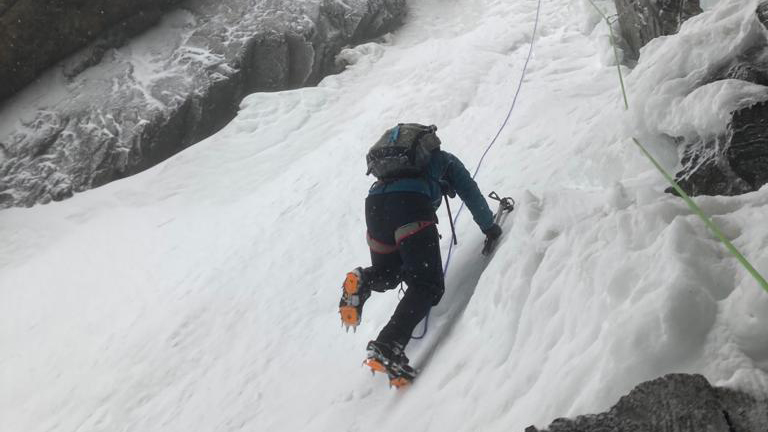
Let’s kick things off by taking a look at what those boffins at the Merriam-Webster Dictionary have to say about the definition of mountaineering. They define mountaineering as 'the sport or technique of scaling mountains'. The word scaling implies climbing, but scaling can also mean to simply reach the top of something.
So, by this definition, can you can call yourself a mountaineer if you’ve hiked up to a summit, as long as it's a mountain rather than a hill? Well, I’m not convinced – besides, the distinction between mountains and hills is blurry at the best of times. We’ll need to consult a more dedicated authority on exactly what mountaineering entails.
The comprehensive Mountaineering: The Freedom of the Hills, is the classic mountaineering text, a 600-page instructional manual vetted by a squad of over 30 expert mountaineering and climbing instructors. It opens with: “Mountaineering is many things: climbing, breathtaking views, and wilderness experience." There’s that word climbing again.
All the latest inspiration, tips and guides to help you plan your next Advnture!
Mountaineering is indeed many things. Fast and light alpinism on big, snowy peaks; technical big wall adventures on remote Patagonian towers; month-long siege-style expeditions in the Greater Ranges; winter mixed climbing in places like the Scottish Highlands; skimo or paralpinism in the Alps – all involve technical skill and equipment beyond what you’d need for hiking.
What defines hiking?
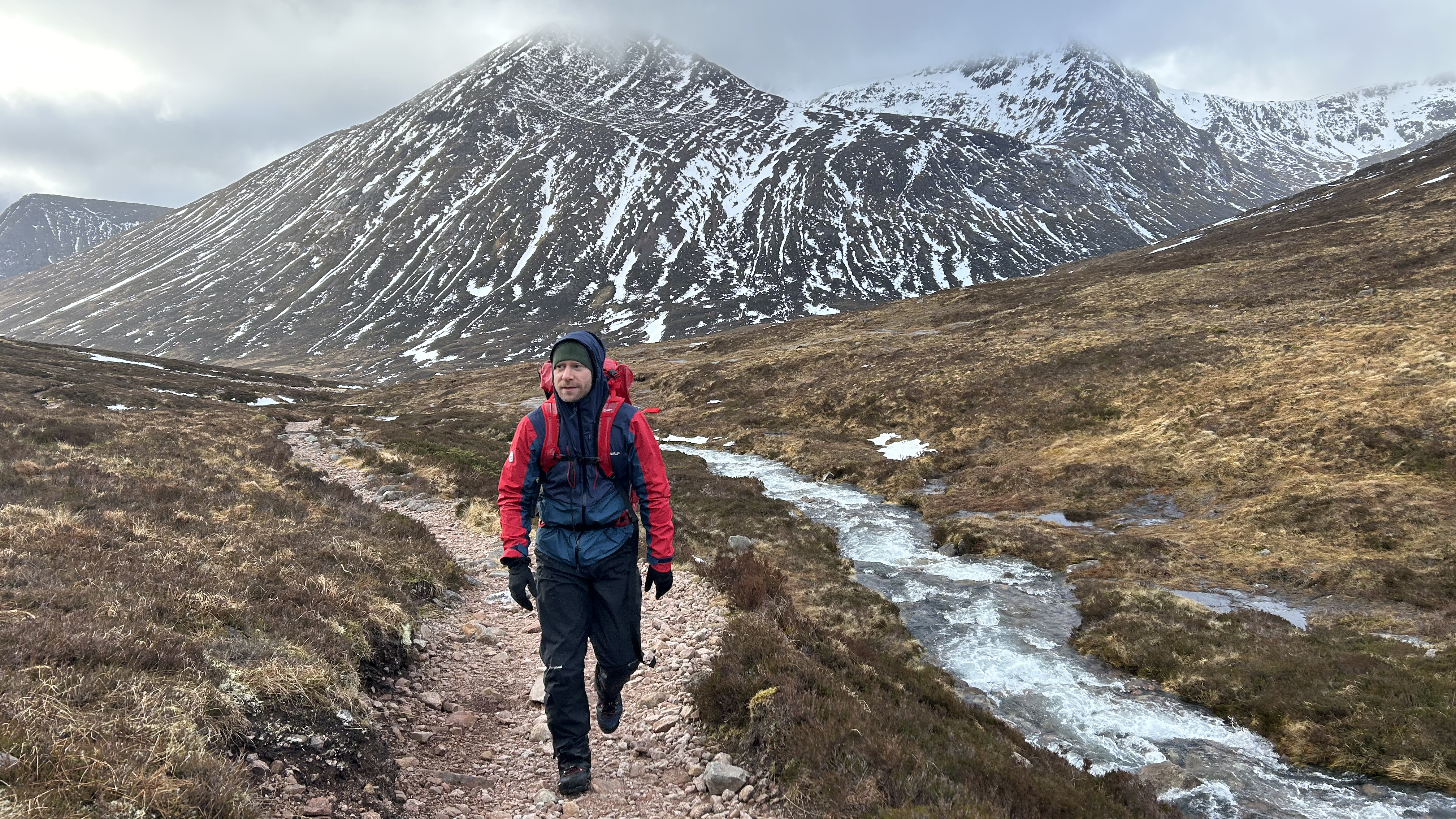
Ah, the English language. So many are the shades of meaning that a wordsmith can have their fair share of field days. For example, the full gamut of synonyms for walk is a delight: stroll, amble, march, saunter, plod, trudge, tramp and wander. Each has its own subtleties of meaning. Us outdoorsy folk are most concerned with a few of the others: ramble, trek… and hike.
Rambling has connotations of walking for pleasure, strolling along at an unhurried pace. A trek sounds more serious and purposeful, usually taking the walker over long distances and across rugged terrain, perhaps to a peak or an alpine hut. Somewhere in between these two is the broader and ubiquitous term, hiking.
It’s a word that covers all manner of adventurous walks, from something like a few hours spent exploring a small section of coast path to a multi-month traverse along a nation’s mountainous spine. So, back to the Merriam-Webster. The verb hike means 'to go on a hike'. How very useful. We clearly need the noun: 'a long walk especially for pleasure or exercise'.
I’d assert that the key word here is walk, something that any able-bodied individual can do naturally and without additional equipment. Whereas definitions of mountaineering veer towards technical skills, climbing and gear. Herein lies the dividing line.
When does hiking become mountaineering?
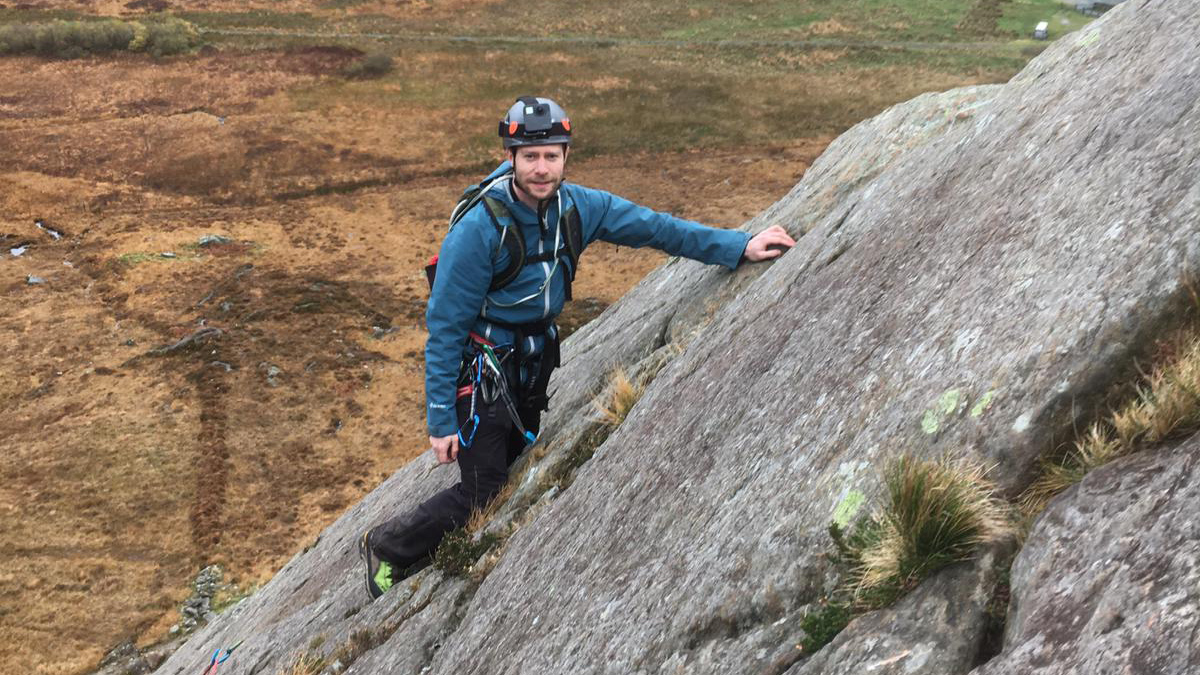
Having considered the definitions of both pursuits, it’s obvious that a mountaineering approach involves technical climbing skill and, often, additional equipment in order to tackle terrain like steep rock steps, gullies and narrow, snowy ridge lines.
The distinction between the two is easier to define in summer conditions. If technical climbing skills and equipment are involved to climb the mountain, then you can reasonably assert that you’re mountaineering, even if there’s no snow and ice for miles around.
What would be considered a difficult hike – and therefore not a climb – in summer can become an easy mountaineering route in winter
Alex Foxfield
With this in mind, the point at which hiking becomes mountaineering is arguably akin to the point at which scrambling becomes climbing, only in this case we’ve also got the seasons to consider.
Some summer scrambles that would usually be considered hikes definitely become mountaineering objectives when plastered with snow and ice. So, the line between hiking and mountaineering seems to shift with the coming and going of the seasons.
In essence, what would be considered a difficult hike – and therefore not a climb – in summer can become an easy mountaineering route in winter.

In the UK, the terms winter walking and winter mountaineering co-exist and, actually, the line between them is relatively clear. Winter walks tend to be straightforward hikes done in winter conditions. I’d assert that these don’t fall into the realms of mountaineering, even though mountain summits may be involved and equipment like crampons and an ice axe may be required for the steeper slopes. Winter walks are not given an official, widely accepted grade as such, though individual guidebooks often provide their own ratings in terms of the overall level of challenge.
On the other hand, winter mountaineering routes in the UK are given a grade – the Scottish Winter Climbing Grade. It’s not an exact science, but typically the kind of terrain that would be at least a scramble in summer becomes a graded mountaineering route in winter conditions. These tend to be routes that involve at least some climbing and a certain amount of exposure, where you’d need to use your axe more than just for balance.
The edge between the two
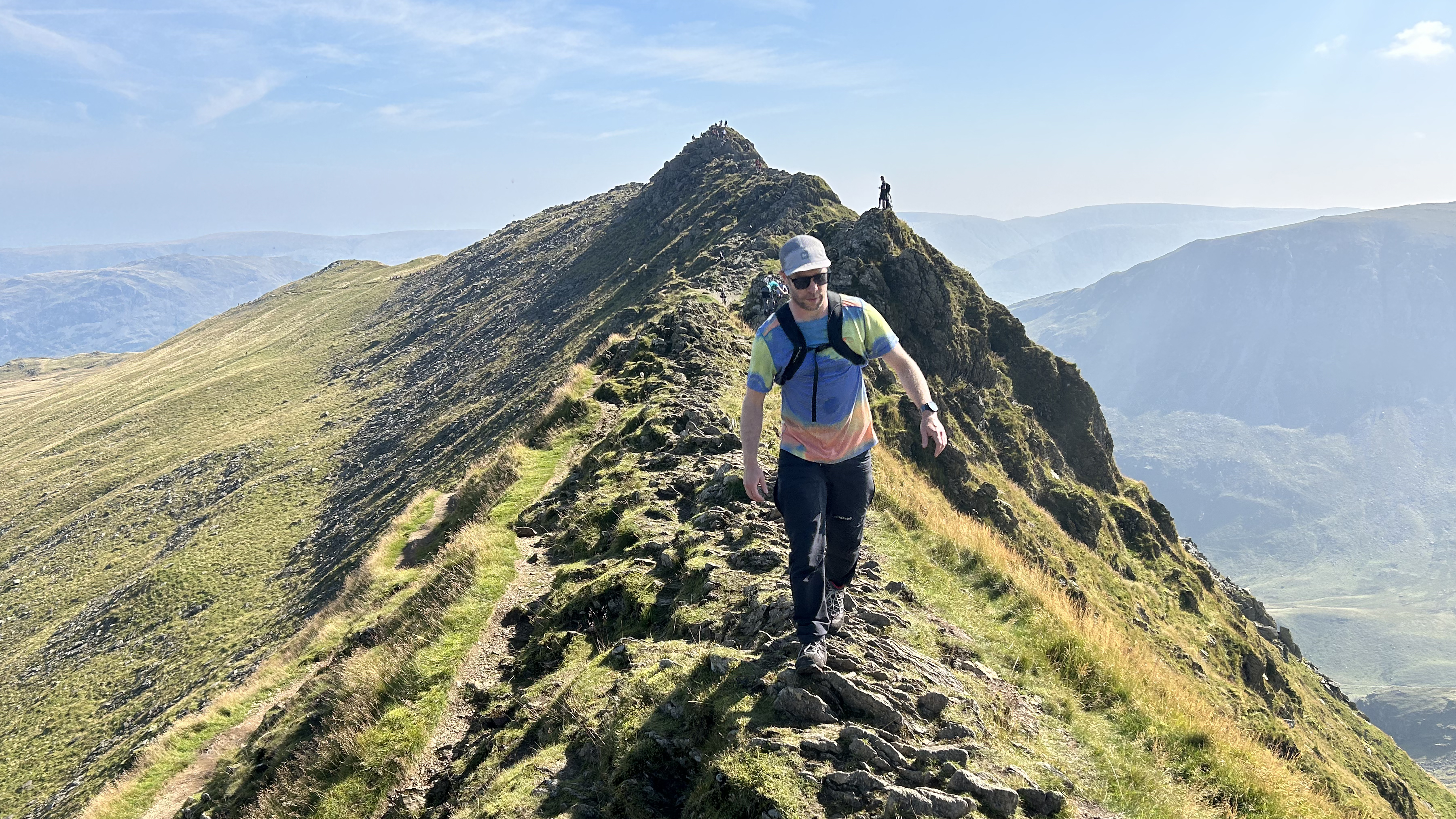
And so, I come back to the question posed by our instructor on Helvellyn as the group progressed along the snowy trail: had we gone from hiking to mountaineering? I was inclined to say no at that point but I was also aware that all of that could change based on the terrain ahead.
Our planned objective that day had been Striding Edge, a notorious and popular arête that’s sometimes cited as one of the most dangerous hikes in the world. In truth, it's merely an exposed ridge walk. While there have been fatalities on the ridge, this has more to do with its popularity than its objective dangers – in summer, at least.
However, after hunkering down in a group shelter for lunch, conditions only worsened. Plans for Striding Edge were aborted and we had to make do with practising ice axe arrests on the steep slopes of the cirque. In doing so, we’d flirted with mountaineering, rehearsed a few key skills, yet the day had still felt more like a winter walk.

I’d return to Helvellyn and Striding Edge the next winter to tackle the traverse, a UK Grade One scramble in summer and a supposed ‘mountaineering objective’ in winter. Now THIS is mountaineering I thought, as I negotiated its narrow ledges, little rock steps and the occasional downclimb, using my axe to climb and not just as a glorified trekking pole.
I'd assert that Striding Edge is a good example of the line between hiking and mountaineering. In summer, it’s an exposed hike, an easy scramble, nothing more. It contains terrain that any hiker with decent fitness and a head for heights should be able to manage. There is no requirement for technical climbing skills, no need for a harness or rope.
If it looks like a mountain and feels like a mountain, then it is one.
Simon Ingram
In winter conditions, it’s a whole different kettle of fish. It qualifies as an easy mountaineering objective. To safely and competently traverse Striding Edge in winter, you’ll need to be proficient with an ice axe, be able to assess snow conditions, read and interpret an avalanche forecast and know how to perform an ice axe arrest should you slip on a steep slope. While a rope and harness aren't necessarily required, the experience of traversing the ridge is serious. In short, it feels like mountaineering.
Simon Ingram, in his excellent book Between the Sunset and the Sea, said something similar on the distinction between a hill and mountain. "If it looks like a mountain and feels like a mountain, then it is one."
At the end of the day, if what you're doing feels like its mountaineering, then you could probably argue that it is mountaineering.
Alex is a freelance adventure writer and mountain leader with an insatiable passion for the mountains. A Cumbrian born and bred, his native English Lake District has a special place in his heart, though he is at least equally happy in North Wales, the Scottish Highlands or the European Alps. Through his hiking, mountaineering, climbing and trail running adventures, Alex aims to inspire others to get outdoors. He's the former President of the London Mountaineering Club, is training to become a winter mountain leader, looking to finally finish bagging all the Wainwright fells of the Lake District and is always keen to head to the 4,000-meter peaks of the Alps. www.alexfoxfield.com

